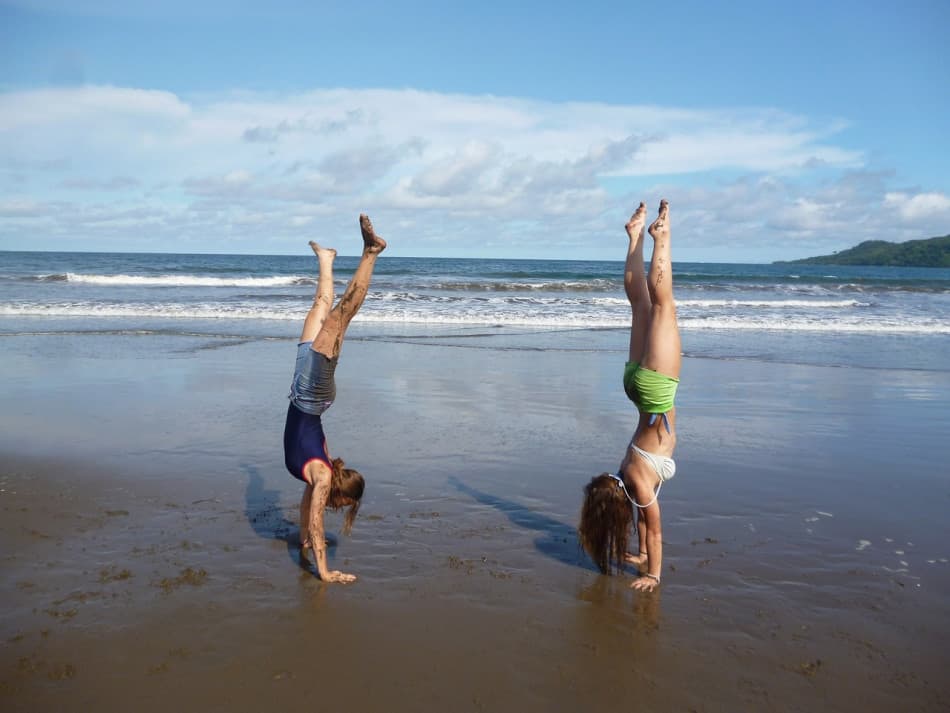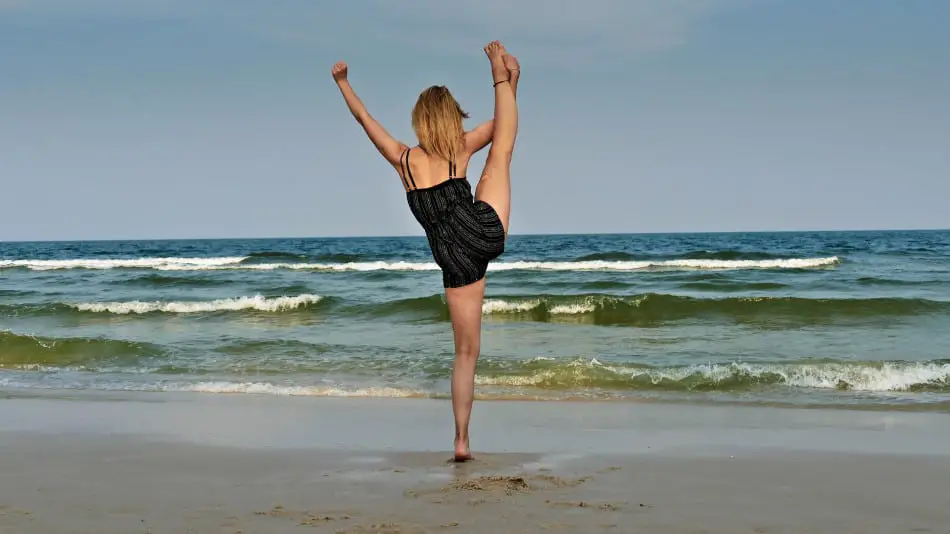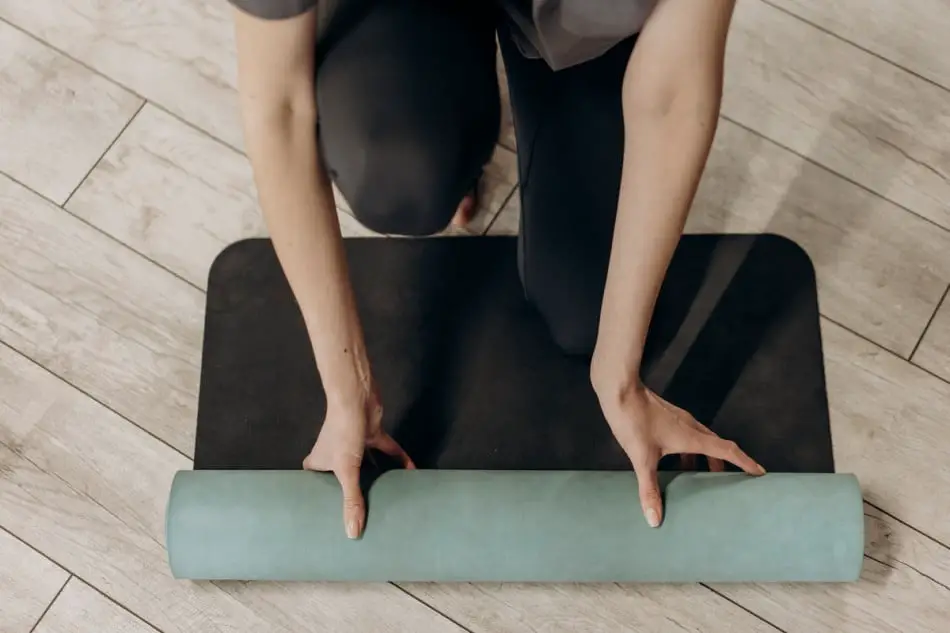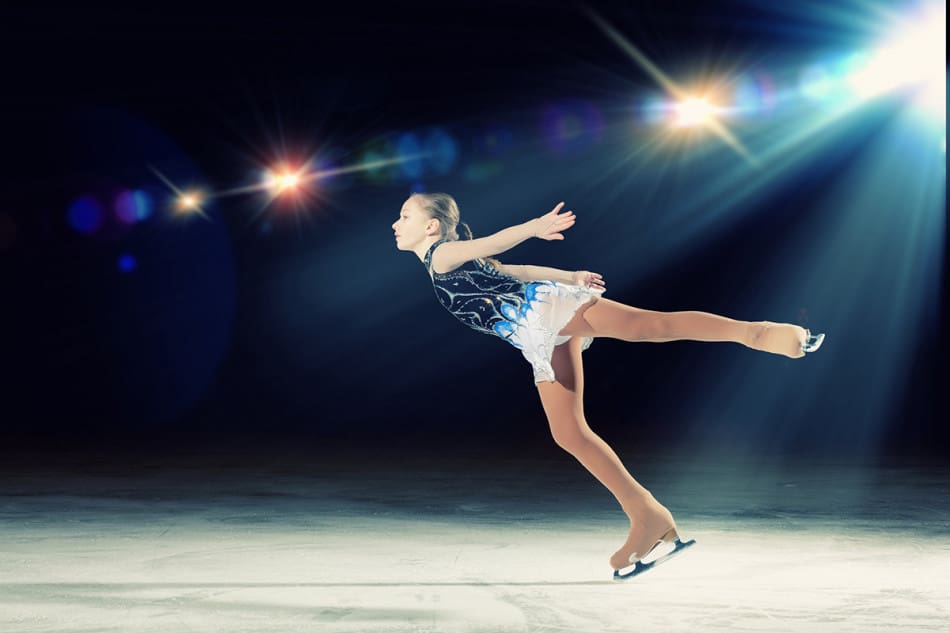Contortionists, people with the unique ability to stretch their bodies in various seemingly unnatural positions while maintaining good body balance, are quite fascinating to watch.
So much, that many wonder – are these people born naturally flexible, do they learn these contortion movements with the guidance of a professional or do they learn them on their own?
You can teach yourself to be a contortionist. However, you need to be aware that natural flexibility is advantageous. With this in mind, to be a good contortionist you need to understand all the principles of contortion. These include; the natural reflexes, feel and touch sensation, balancing of joints and stretching of the muscles, stretch and joint balance, body positioning and strength and flexibility.
A common misconception is that contortion is only for the naturally flexible or yoga practitioners. These are indeed false stereotypes.
Contrary to this widespread belief, anyone can learn to be a contortionist by understanding all the basic principles.
This article will focus on the best practices to kickstart learning contortionism on your own.
How to Become a Self-Taught Contortionist
Here, we’ll discuss principles to get familiar with and ways to teach yourself to become a contortionist.
-> Read Also What Is An Autodidact?
Step 1: Get Familiar with the Principles of Contortionism

Understanding the fundamentals of contortion is a prerequisite for learning how to do it.
In addition, contortionists engage in strenuous stretching exercises and flexibility training, so you must familiarize yourself with all its fundamentals.
Once you fully comprehend and apply these principles, you will have complete control over your body’s movements and be able to get the best outcomes from all your self-contortion practice.
The principles of contortionism are as follows:
1. The Natural Reflexes
The natural reflexes are the primary determinants of contortionism. You must understand which body postures are natural and beneficial to your contortionist movements.
Typical natural reflexes include:
2. Flexion
The bending motion that your knee and elbow muscles make around your limb joint that enables you to bend a limb or your body from a flexed position is known as Flexion.
During contortion, this movement controls how your body flexes.
3. Extension
The extension involves lying on the floor while encircling your body with your arms and legs. This will give you a good idea of your wrist and elbow extension movement.
4. Natural Bending
This refers to our natural bending position. When performing contortion movements, your arms and legs should be relaxed.
Understanding these reflexes is vital to controlling your sway and body rhythms while contorting.

5. The Sensation of Feel and Touch
This is the mind that drives every contortion movement. Sensing the contortion movement determines how the body’s muscles perform and behave. When stretching,
it’s essential to keep your body and mind relaxed and stress-free, allowing your body to flow naturally.
6. Muscle stretch and Joint Balance
While muscle stretch is achieved by flexing your body muscles to elongate the limbs while remaining flexible, joint balance on the other hand refers to the precise control of weight distribution across our body’s joints and muscles, allowing for smooth and coordinated movement.
If you do this regularly, your body will begin to adopt a natural posture of contortion flexibility.
7. Body Positioning
Your body positioning should be consistent with your joint’s location to maintain full-body stability and balance while contorting. In addition,
it requires mental and physical coordination; you must ensure that your body movements coordinate with your mental reflexes to provide a natural balance position without undue strain.
8. Strength and Flexibility
These two principles guide contortionists on how to balance weight-bearing with bending and torsion of the body.
While flexibility decreases with age, strength increases. However, young adults have the perfect balance of strength and flexibility, allowing them to perform numerous contortion-like movements.
According to a research survey, the table below shows how flexibility varies with age in old adults.
| Age Gap (years) | Shoulder Flexibility (degrees) | Hip Flexibility (degrees) |
| <30 | 160 | 120 |
| 30-50 | 150 | 105 |
| 50-70 | 130 | 95 |
| >70 | 110 | 80 |
Table Adapted from the National Library of Medicine
Step 2: Make a Training Plan

Contortion is a gradual process; it combines stretching and demands that you work with a consistent training routine.
So, to improve your contortion stretches, you must draw a daily stretching routine and not miss any training sessions.
Buying a training fitness planner to help you ensure regular stretches will also help.
Step 3: Identify and Visualize Your Start point
This is a basic principle before you begin contorting.
First, you need to realize that mastering contortion is not a day’s job; it is a gradual process that involves visualizing every movement before you proceed to try it out.
Also, before learning the actual contortion positioning techniques, you should visualize and understand all the contortion stretches you will be doing to identify body flow and rhythms.
Step 4: Practice Contortion Stretches Regularly
After visualizing your contortion routine, proceed to put it into action by practicing contortion stretches regularly.
There are two forms of contortion stretches:
- Front bending contortion stretches and
- Back bending contortion:
While front contortion stretches are forms of contortion movement that involve forwards stretches or forward handstands, back bending contortion stretches refer to a contortion movement that includes back bending stretches and backward leg stands.
Other contortion stretches include leg stretches, hip stretches, and full splits.
Regular practice of these stretches with a contortion body stretcher will align your body to a more elastic state and help you maintain flexibility to aid contortion movements.
Step 5: Watch Gymnastic Moves
To become a self-taught contortionist, you must learn contortionism from the masters.
Watching gymnasts perform will help improve strength, balance, and flexibility.
In addition to this, seeing these professionals perform contortion moves will eliminate the tendency to adopt incorrect techniques and forms.
Step 6: Exercise Regularly
For contortionists to maintain flexibility, prevent joint damage, and improve physical endurance and overall strength exercise, routines must be regular.
While exercising, folds and splits must be done regularly and in all positions.
Here is a compilation of exercise routines contortionists should adhere to;
- Start with warm-up exercises
- Move to arm reflexes, arm stands, and other abdominal exercises
- Next, perform some leg stretches and bend-leg splits
- Proceed to do some backbends and standing sit-ups
- Finally, stretch your body in all directions after completing all contortion exercises.
Step 7: Maintain Healthy Body Practices
Maintaining a healthy body while engaging in contortion exercises is crucial. You don’t want to overwork yourself when trying to get in shape.
It’s essential to take breaks when needed, eat nutritious shakes, and exercise with foods like protein, cardio, and workout takeaways.
-> Learn More about Self-Learning vs. Classroom Learning: Which Is Better?
Learning Contortion as an Adult

Adults who feel learning contortion is for young ones with flexible bodies are not entirely correct.
Contortion requires as much strength and agility as it does flexibility, especially in older adults.
So, concentrating on increasing your strength to balance your body rigidity and flexibility would be best.
However, as adults, you must understand your body reflexes and recognize that you are not as flexible and pliable as you were in your youth.
Your body straining and movements are limited, so you must adapt to your muscle reflexes and body balance.
All contortion principles still apply to adults, but you must focus on your strength and agility to manage your flexibility and strength.
Tips to Remember When Teaching Yourself to Contort
It will not always be easy to begin your contortionist journey. There will be times when your body balance fails you, and you will only be able to keep your head up by wrapping your arms around yourself.
However, you don’t panic or succumb to pressure; instead, you work with what you have, whether strength or body flexibility and figure out how to tweak your training routine.
Keep these tips in mind the next time you hit a rocky stone while contorting:
- Focus on increasing your strength while decreasing your flexibility.
- Avoid failure or deceitful signs by mentally preparing yourself before any training session.
- Work on your strength, not your weakness
- Consistently maintain your training schedule
- Remember that practice makes perfect – don’t stop trying!
- Don’t push yourself too far or exceed your safe limits.
- Your body reflexes should align with your training routine and body stretches. Don’t try to imitate someone else’s body training routine if it isn’t right for you.
-> Learn more about the 7 best websites for self-learning
Frequently Asked Questions

Q: How Can I Increase my Flexibility for Contortion?
By stretching. Regular body stretches and exercise will assist you in becoming more flexible for contortion. With consistent practice, you will increase your flexibility for contortion.
Q: Does Contortion Deform Your Body?
It does not deform your body when practiced under safe conditions. On the other hand, long-term contortion practitioners suffer long-term spine damage, according to a 2008 medical report. However, if done correctly, body
distortion should not be a scare.
Q: How Long Does it Take to Develop Your Contortion Stretches?
It should take you 20-30 days of consistent practice to perfect your contortion ability. Training, determination, and frequent contortion stretches are the three ingredients required to develop your contortion abilities and push your limits.
Final Thoughts
Contortion is a fun way to express yourself through your body rhythms, flexibility, and athleticism. Mastering it is enjoyable, but it can take a long time to become proficient.
This article has given you some insight into how to master contortion on your own, with all its stretches, tidbits, and fundamentals, which will help you save a few hundred dollars in the process.
References
- https://www.youtube.com/watch?v=KbRgbSfdEPQ
- https://www.contortion.space/blog/5-mistakes-a-beginner-contortionists-makes
- https://themusebrooklyn.com/blog/how-to-become-a-contortionist
- https://www.wikihow.com/Become-a-Contortionist
- https://www.contortion.space/blog/learning-contortion-as-a-adult
- https://www.smartlyguide.com/become-a-contortionist/
- https://www.ncbi.nlm.nih.gov/pmc/articles/PMC3703899/






